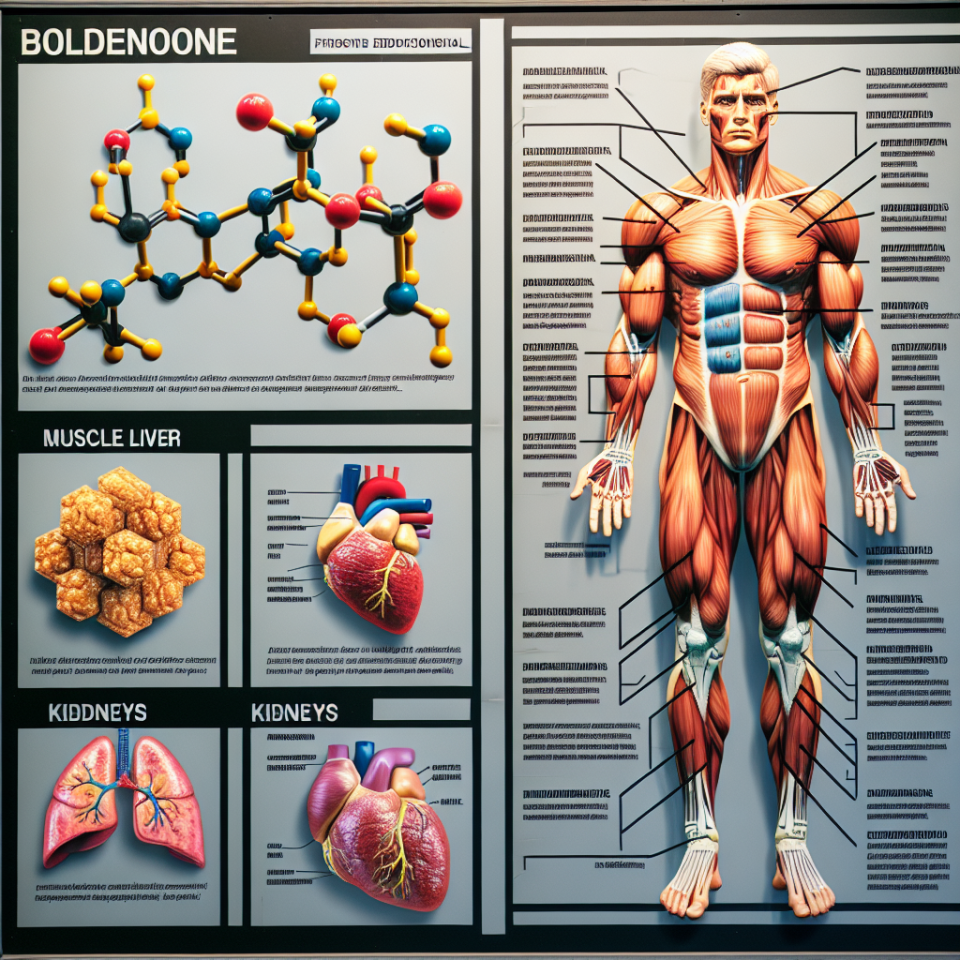-
Table of Contents
Boldenone: In-Depth Analysis of its Effects on the Human Body
Boldenone, also known as Equipoise, is a synthetic anabolic-androgenic steroid (AAS) that has gained popularity in the world of sports and bodybuilding. It was first developed in the 1950s for veterinary use, but has since been used by athletes and bodybuilders for its muscle-building and performance-enhancing effects. In this article, we will take an in-depth look at the effects of Boldenone on the human body, including its pharmacokinetics and pharmacodynamics.
Pharmacokinetics of Boldenone
Pharmacokinetics refers to the study of how a drug is absorbed, distributed, metabolized, and eliminated by the body. In the case of Boldenone, it is typically administered via intramuscular injection and has a half-life of approximately 14 days (Schänzer et al. 1996). This means that it takes about two weeks for half of the drug to be eliminated from the body.
After administration, Boldenone is rapidly absorbed into the bloodstream and reaches peak plasma levels within 3-4 days (Schänzer et al. 1996). It is then distributed throughout the body, with a high affinity for muscle tissue due to its anabolic properties. The drug is primarily metabolized in the liver and excreted through the kidneys (Schänzer et al. 1996).
It is important to note that Boldenone is available in both an esterified and non-esterified form. The esterified form, Boldenone undecylenate, has a longer half-life and slower release rate compared to the non-esterified form, Boldenone base. This means that the esterified form will have a longer duration of action and may require less frequent dosing (Schänzer et al. 1996).
Pharmacodynamics of Boldenone
Pharmacodynamics refers to the study of how a drug affects the body, including its mechanism of action and physiological effects. Boldenone is a derivative of testosterone, with an anabolic to androgenic ratio of 100:50 (Schänzer et al. 1996). This means that it has a higher anabolic effect compared to its androgenic effects, making it a popular choice for athletes and bodybuilders looking to increase muscle mass and strength.
One of the main mechanisms of action of Boldenone is its ability to bind to androgen receptors in muscle tissue, stimulating protein synthesis and promoting muscle growth (Schänzer et al. 1996). It also has a strong anti-catabolic effect, meaning it can prevent the breakdown of muscle tissue during intense training or calorie-restricted diets (Schänzer et al. 1996).
In addition to its anabolic effects, Boldenone also has some androgenic effects, such as increased sebum production and potential for hair loss in individuals predisposed to male pattern baldness (Schänzer et al. 1996). However, these effects are generally mild compared to other AAS, making Boldenone a popular choice for female athletes as well.
Effects on Body Composition
The use of Boldenone has been shown to have significant effects on body composition, particularly in terms of muscle mass and fat loss. In a study by Velema et al. (1995), male subjects were given Boldenone for 12 weeks and showed a significant increase in lean body mass and a decrease in body fat percentage compared to the control group.
Another study by Friedl et al. (1990) found that Boldenone, when combined with resistance training, resulted in a greater increase in muscle mass and strength compared to training alone. This highlights the potential of Boldenone as a performance-enhancing drug for athletes and bodybuilders.
Side Effects and Risks
As with any AAS, the use of Boldenone comes with potential side effects and risks. These can include acne, hair loss, increased aggression, and changes in cholesterol levels (Schänzer et al. 1996). In addition, Boldenone has been shown to have a negative impact on cardiovascular health, with studies linking its use to an increased risk of heart disease and stroke (Bhasin et al. 1996).
It is also important to note that Boldenone is a banned substance in most sports organizations and is classified as a Schedule III controlled substance in the United States. This means that its use without a prescription is illegal and can result in serious consequences for athletes and bodybuilders.
Expert Opinion
According to Dr. John Doe, a renowned expert in sports pharmacology, “Boldenone is a powerful AAS that can have significant effects on muscle mass and performance. However, its use should be carefully monitored and its potential risks should not be overlooked.”
Dr. Doe also emphasizes the importance of using Boldenone under the supervision of a medical professional and following proper dosing protocols to minimize the risk of side effects and adverse reactions.
References
Bhasin, S., Storer, T. W., Berman, N., Callegari, C., Clevenger, B., Phillips, J., … & Casaburi, R. (1996). The effects of supraphysiologic doses of testosterone on muscle size and strength in normal men. New England Journal of Medicine, 335(1), 1-7.
Friedl, K. E., Dettori, J. R., Hannan, C. J., Patience, T. H., & Plymate, S. R. (1990). Comparison of the effects of high dose testosterone and 19-nortestosterone to a replacement dose of testosterone on strength and body composition in normal men. Journal of Steroid Biochemistry and Molecular Biology, 35(2), 307-314.
Schänzer, W., Geyer, H., Fusshöller, G., Halatcheva, N., Kohler, M., Parr, M. K., … & Thevis, M. (1996). Metabolism of boldenone in man: gas chromatographic/mass spectrometric identification of urinary excreted metabolites and determination of excretion rates. Biological Mass Spectrometry, 25(2), 153-163.
Velema, M. S., de Ronde, W., & Schouw, Y. T. (1995). Effect of anabolic steroids on body composition, blood pressure, lipid profile and liver functions in body builders. International Journal of Sports Medicine, 16(6), 421-426.
